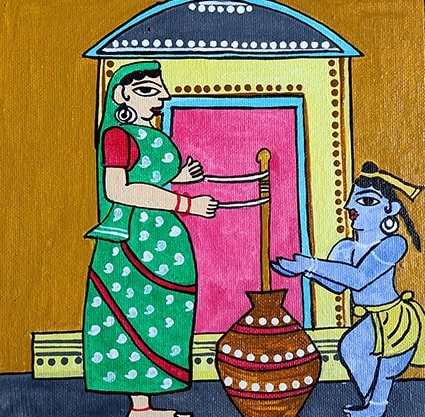Teachers' Training
Kalighat Art
Kalighat painting, characterized by its bright colours and bold outlines, evolved as a unique genre of Indian painting in 19th-century Bengal. Done on cloth or ‘patas’, they depicted conventional images of gods & goddesses and scenes from epics such as Tulsidas’ Rama Charita Manas. The artists were village folk who travelled from place to place with their scroll paintings and sang out the scenes from the epics depicted in these paintings during village gatherings and local festivals. These artists were called patuas or ‘painters on cloth’. From the depiction of gods and other mythological characters, these paintings developed over time to reflect a variety of themes.
Over time, influenced by the different art forms around them and with a need to work quickly, the patuas abandoned their linear, narrative style in favour of single pictures involving one or two figures. The backgrounds were left plain, all non-essential details removed, and basic combinations of colours were used. This created the key characteristics of the Kalighat genre. Kalighat paintings primarily use basic colours like indigo, blue, black, yellow, red and green made from homemade dyes. Only for ornamentation do artisans use silver and gold.
In this structured, module-based, 20-hours online course with Penkraft, you will learn about acrylic paints, learn the basics of outline and usage of colors and then move on to creating this art on different surfaces like- canvas, cloth bag, photo frame. All through the course, we share tips and tricks that makes your experience even more exciting. We also share a set of dos and don'ts to keep you right on track!


